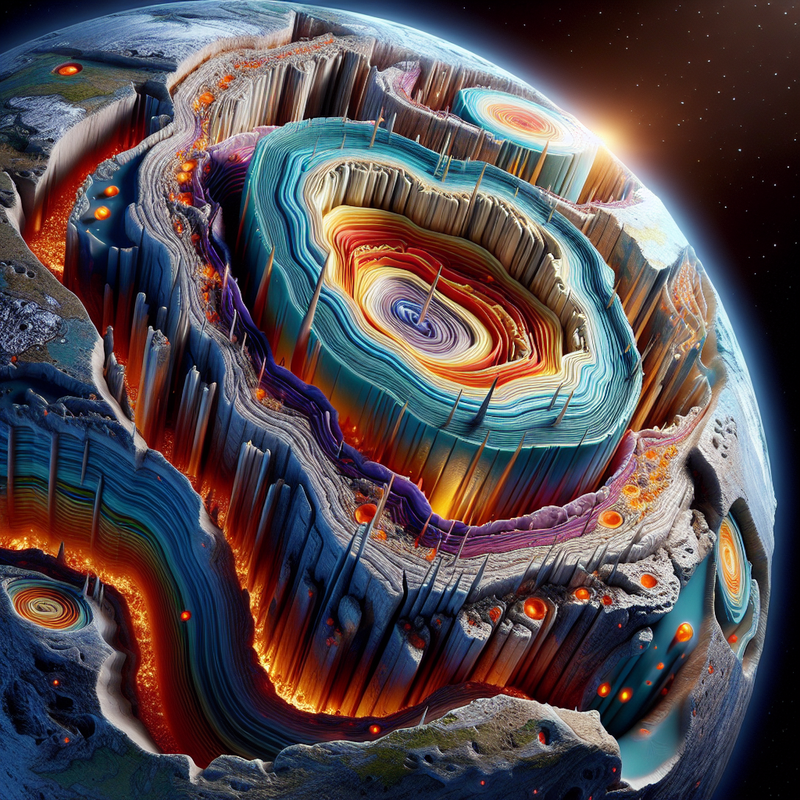The Hypothesis of Ancient Planetary Fragments
In the shadowy depths of our planet, seismic imaging techniques have unearthed colossal entities lurking deep in the Earth’s mantle, as revealed by a report from Joseph Shavit at The Brighter Side of News. Termed “large low-velocity provinces” or “LLVPs,” these continental-sized structures lurk under Africa and the Pacific Ocean and have been a source of fascination due to their capacity to slow down seismic waves.
Emerging speculation suggests a cosmic connection for these LLVPs—the possibility that they are relics of an archaic celestial body named Theia, which is hypothesized to have collided with our planet, sparking the Moon’s creation. This collision is a cornerstone in understanding the respective developments of the Moon and Earth, and the idea that remnants of Theia’s core could have merged with Earth’s mantle to form the LLVPs is gaining traction.
“This line of inquiry marks a new horizon in the quest to decipher planetary beginnings,” remarked a scholar involved with the research. “While the concept is radical, the evidence aligns with it quite strikingly.”
Researchers at Caltech have published their findings in Nature, where they propose that iron-enriched pieces from Theia’s core might account for the LLVPs’ peculiar density—measuring 2 to 3.5 percent denser than the surrounding mantle—thus explaining their position near Earth’s core.
Computer Simulations and Planetary Development
The concept gained momentum after Qian Yuan, a significant contributor to this research, was influenced by a 2019 presentation on the giant-impact hypothesis. Working with a team of cross-disciplinary specialists, he employed simulations to deduce that post-collision, Theia’s core fragments could separate into the concentrated areas that could persist for eons.
The computer simulations shed light on why Theia’s fragments might have not dispersed uniformly throughout the Earth’s mantle. The findings suggest that the relatively cooler, denser lower mantle might have stayed concentrated, giving rise to the accumulation of Theia’s dense materials into the LLVPs seen today.
This discovery has ramifications that extend beyond Earth’s geological annals. If colossal impacts happened on other planets as well, similar mantle irregularities could exist, potentially shedding light on tectonic phenomena and continental genesis.
Implications of the Discovery
Paul Asimow, one of the study’s co-authors, noted the profound implications of the discovery, highlighting the need to rethink how these deep-mantle formations could have influenced Earth’s evolutionary pathway.
Ongoing studies of Earth’s inner layers might provide indisputable proof of our planet’s violent early episodes, potentially transforming our understanding of planetary evolution. The research bridges the divide between the initial upheaval of Earth’s formation and its current configuration, proposing a narrative where cosmic cataclysms play a key role in the creation of planets.
While uncertainties linger, these LLVPs serve as intriguing windows into Earth’s dynamic past and the monumental cosmic powers that molded it, inviting us to view our planet and its history in a new light.
















